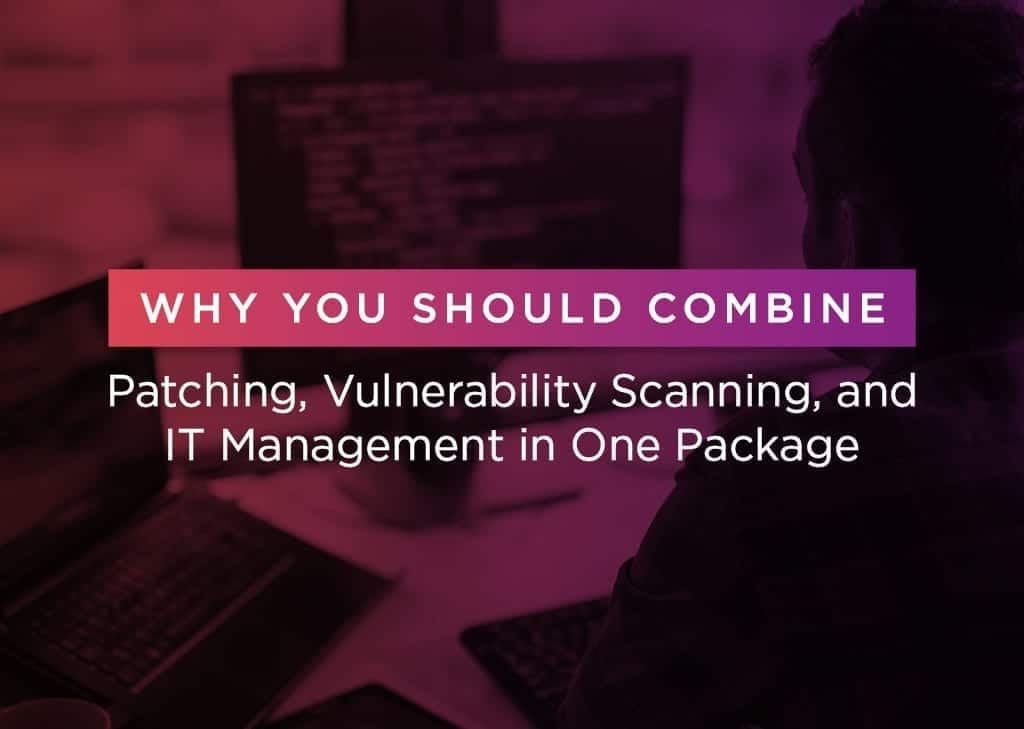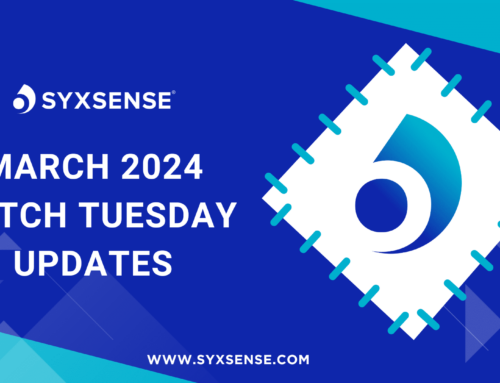
Why Combine Patching, Vulnerability Scanning, and IT Management in One Package?
With constant disruption over the last few decades due to a constant stream of IT breakthroughs, it is no wonder that the security landscape has evolved into a patchwork of disparate tools. Administrators have grown accustomed to hopping from console to console to address anti-virus, firewalls, penetration testing, and other security applications.
Even when vendors attempt to assemble an “all-inclusive” security suite, they either miss key areas, or new applications and technologies emerge. It doesn’t take long for these comprehensive packages to be full of gaping holes.
Specific to patching and vulnerability scanning, many organizations have go-to applications for these tasks. They add them to their security arsenals and log into these tools when they need to conduct a scan or give patching more attention.
There is a better way. Here are three reasons why it makes sense to combine patching, vulnerability scanning, and IT management into one integrated, cloud-based package.
1. Single Console
The obvious advantage is ease of use. By combining IT management, patching, and vulnerability scanning, IT can view it all on one screen. This immediately consolidates the management of vulnerabilities and security weaknesses exposed by open ports, disabled firewalls, ineffective user account policies, and out-of-date patches.
Other point products may provide a long list of potential vulnerabilities, but they don’t patch them. Alternatively, they may patch but don’t necessarily detect the vulnerabilities that exist. Either way, failing to consolidate these functions means more work for IT and greater risk for the organization.
2. Compliance and Reporting
Reporting is often a weak spot among applications dealing with patch management or vulnerability scanning. They may perform a single function somewhat adequately, but the reports provided are often lacking.
At one end of the spectrum, reports are too sketchy. At the other end, they provide endless lists of possible threats, or scrolls of patches needing to be fixed – without differentiating between patch versions from vendors that often roll older patches into more recent patch releases. Thus, IT spends time distributing unnecessary patches while failing to prioritize an urgent patch when a new attack vector emerges.
Compliance, too, is often a weak spot. With so many industries required to comply to regulations such as HIPAA, SOX, and PCI-DSS, unified reporting that comprehensively addresses patches and vulnerabilities is a must have.
3. No More Scripting
Vulnerability scanning and patching can involve a lot of tedious, repetitive tasks. It is time consuming to wade through long lists of alerts and potential problems. That’s why it’s so important to add management and process automation into the equation.
Let’s take the example of a multistage task such as patching a virtual server. It requires the patching of a VM guest and a reboot, followed by patching the host and another reboot. Why right scripts for all of that when it can be automated when IT management, and patch management are integrated? Scripting, then, should be replaced by drag and drop tools.
Automation can also take care of areas like:
- Patch distribution: sending the right patches to the right devices rapidly.
- Patch supersedence (automatically ignoring older patches that are taken care of by a newer release)
- Eliminating network overload: If you push Microsoft Office patches out to 300 machines simultaneously, it can stall the network due to the quantity of data involved. Intelligent management platforms send the patch across the wire once to be shared peer-to-peer within the network.
- Mobile devices returning to the office: The system detects their presence, quarantines the devices, checks for compliance, and remediates any issues before allowing them back onto the network.
- Patch approval: Some organizations require various points of approval before patches are released. Good management tools make it easy to set this up once and thereafter be implemented automatically as part of the patching process.
- Audits: Integrated management of vulnerability scanning and patch remediation simplifies the task of gathering up information for audits via drag and drop capabilities.
- Patch roll back: If a patch caused an issue, it should be a simple matter to roll it back without IT jumping through hoops.
- Threat alerts: Intelligent management sifts through enormous log entries and narrows threats downs to the handful requiring urgent attention.
Try Syxsense for Free
Syxsense combines IT management, patch management, and security vulnerability scanning in one powerful solution.
Syxsense Cortex simplifies complex IT and security processes with a drag-and-drop interface. Pre-built templates keep organizations secure and without needing large teams, specialists, or scripting.
Start Your Free Trial of Syxsense
Syxsense combines IT management, patch management, and security vulnerability scanning in one powerful solution. Get started today.




